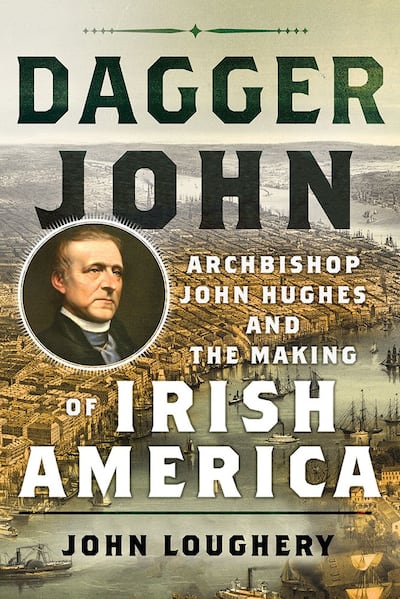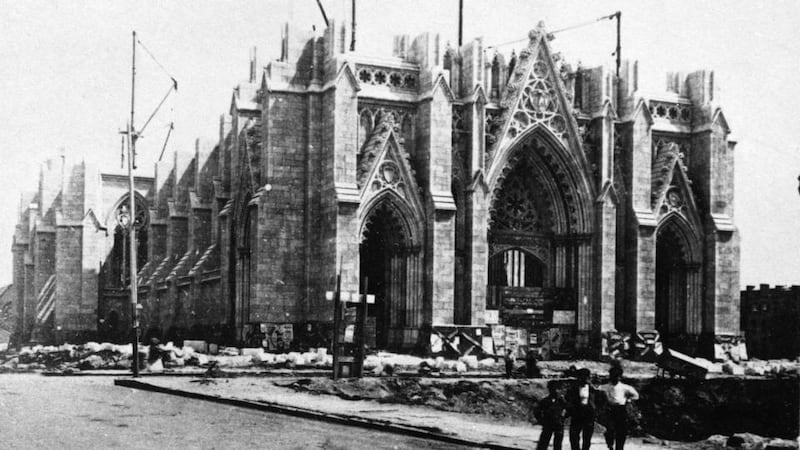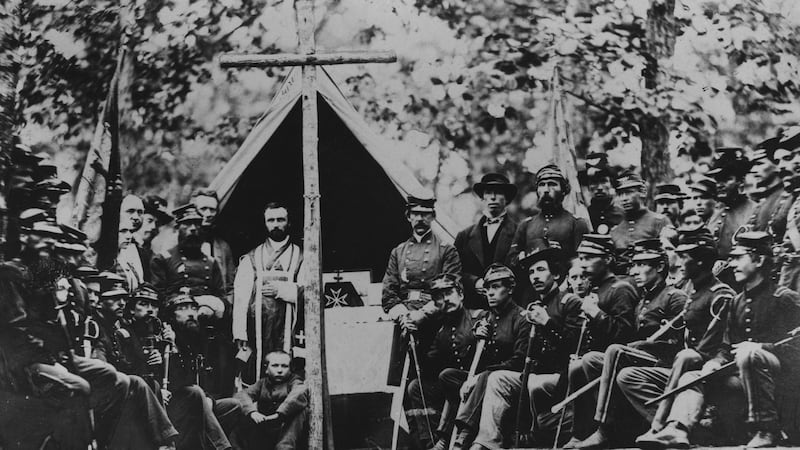On Saturday, as St Patrick's Day celebrations take place across the world, Taoiseach Leo Varadkar will march along Fifth Avenue in Manhattan for the annual parade.
One of the world’s oldest parades, the route will pass by St Patrick’s Cathedral, the magnificent neo-gothic church in mid-town Manhattan.
A new book released this week offers a timely insight into the man who founded the cathedral, providing a fascinating glimpse of the world of Irish America in the 19th century.

Dagger John: Archbishop Hughes and the Making of Modern America is a new biography by John Loughery of John Hughes, the controversial cleric who rose from poverty to become one of the most recognisable figures of 19th-century America.
Raised in a relatively middle-class farming family in Tyrone in the shadow of the failed rebellion of 1798, Hughes emigrated with members of his family to America in 1817.
Ambition and drive
From the outset he was a man of ambition and drive, quickly deciding upon a career in the priesthood while undeterred by the anti-Irish prejudice that characterised the American church at the time.
His first job was in Philadelphia, where he witnessed at first hand the anti-Catholic sentiment that was to culminate in the riots of 1844 when churches and Irish homes were attacked by furious mobs.
It was here that the seeds of his political consciousness were sown, as Hughes became a passionate advocate for the cause of the Irish in America, viewing his calling as being political as much as it was religious.

It was New York that was to become the city he would call home. By the time Hughes moved there in 1838, an estimated 20 per cent of the population of Manhattan was Irish. As the horror of the Irish Famine began to unfold, that number began to soar. Almost 113,000 Irish people landed in New York in 1849 alone.
The impact on the social fabric of New York was enormous. Most of the Irish were starving and destitute, living in squalor in downtown Manhattan.
Hughes saw his role as one of leadership and representation of the Irish in America. He had been archbishop of New York since 1840 – a big coup for the growing Irish population who were facing intense anti-Catholic prejudice, but who at the same time had one of their own in one of the city’s top jobs.
Right political circles
He was also moving in the right political circles. In 1861, a year into the Civil War, he was personally dispatched by President Abraham Lincoln and secretary of state William H Seward on a nine-month public relations mission to Europe in a bid to highlight the Union's cause, amid fears that several European countries were considering recognising the Confederate states.
Hughes was a strong supporter of the North’s side in the Civil War, believing the war was an excellent opportunity for the Irish to prove their commitment to America. “If the sons of Tyrone, Roscommon and Kilkenny could distinguish themselves in sufficient numbers, if they showed a willingness to sacrifice . . . then they could be finally, irrevocably, accepted as what they had never been: Americans,” Loughery writes.
But Hughes’s enthusiasm began to fade as the death toll mounted. He was also, in the final year of his life, faced with the appalling events of 1863, when an angry mob – mostly Irish – went on a five-day rampage across Manhattan, targeting African-Americans and torching an orphanage for African-Americans, as they protested against conscription.
Indeed it was Hughes’s views own views on slavery that tarnished his posthumous reputation. He famously opposed Daniel O’Connell’s call on Irish-Americans to support the cause of the slave, believing that the Liberator would do better to focus on the injustices faced by the Irish.

Like many Irish-Americans and the Catholic hierarchy more generally, Hughes opposed abolition; slavery was “not an unmitigated evil”, he once said. While his biographer argues that his position was more nuanced than his reputation suggests, Loughery accepts that “by the standards of progressive thinkers of his own day, John Hughes was a racist man”.
Once sparsely populated
But more than 150 years on, his real legacy can be seen in the heart of New York. While today St Patrick’s Cathedral nestles below the huge skyscrapers of Fifth Avenue, it once stood proudly alone on a sparsely populated area of Manhattan. Hughes, always the canny politician, had the vision to see that midtown was beginning to flourish, and vowed to give his beloved Irish people a cathedral they could be proud of.
As Leo Varadkar becomes the first gay prime minister to march in the parade, St Patrick's Day remains a powerful testimony to the importance of Irish identity in the foundation of the city of New York. Even if the ties to Catholicism have faded, St Patrick's Cathedral is a permanent testimony to the enduring presence of Irish-America in the United States.













